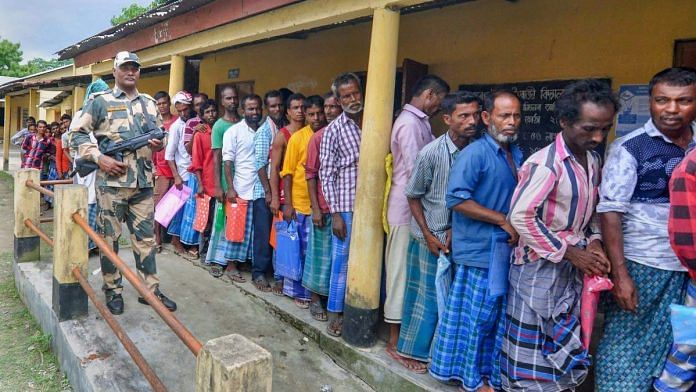Of 36 states and UTs, 25 record a 100% coverage. Modi govt has made Aadhaar the basis of all its welfare schemes.
New Delhi: Aadhaar, whose constitutional validity was upheld by the Supreme Court earlier this week, has become a unique identity document for 97 per cent of the country’s teeming population, with as many as 25 of the 36 states and UTs recording a 100 per cent coverage.
While another seven states have between 80 and 100 per cent coverage, Aadhaar saturation remains dismally low in Assam, at just 11 per cent, data available with the Unique Identification Authority of India (UIDAI) shows.
Also read: The lazy person’s guide to the Supreme Court’s landmark Aadhaar judgment
The coverage has been kept deliberately low in Assam which has been grappling with the issue of “illegal immigration” from neighbouring Bangladesh and is in the process of updating its National Register of Citizens (NRC).
The other states with low coverage of Aadhaar are Meghalaya, at 29 per cent, and Nagaland and Andhra Pradesh with 65 per cent and 61 per cent, respectively.
The unique 12-digit ID, brought in by the Congress-led UPA government in 2009, is valid for residents of the country and is not a proof of citizenship.
Among various age-groups, the biometric identity coverage is the highest among adults, at nearly 100 per cent. Of the total infants in the 0-5 age category, roughly around 52 per cent have Aadhaar numbers and in the 5-18 age-group, 78 per cent have the ID.
UIDAI claims its focus has been on the 0-5 age-group for a while now (data available until 31 August). However, logistical issues plus the fact that the biometrics data of children in this age-group is not collected — which means once they grow up, they will have to go back to give biometric details — have deterred parents from getting Aadhaar for infants.
Of the total Aadhaar coverage, adults in the age-group of 18 years and above account for 72 per cent, 5-18 age band for around 24 per cent and the 0-5 age-group for around 4 per cent.
In the adult category, while women account for 34 per cent of Aadhaar holders, men form 37 per cent. The figures for female and male in the 5-18 age bands are 11 per cent and 12 per cent respectively, and around 2 per cent each among infants below 5.
Also read: The middle ground on Aadhaar still eludes us
After coming to power in 2014, the Narendra Modi-led BJP government decided to ensure universal coverage under Aadhaar by June 2015. At that point, enrollment was around 68 crore, which has jumped to nearly double the figure since.
The Modi government has made Aadhaar the basis of all its welfare programmes, linking it to every conceivable scheme, including MGNREGS, pensions, scholarships, public distribution system, LPG connections and Jan Dhan Yojana, among others as well as to the PAN number and income tax returns.
While delivering its verdict Wednesday, the top court said Aadhaar “gives dignity to marginalised sections, which outweighs the harm”.



